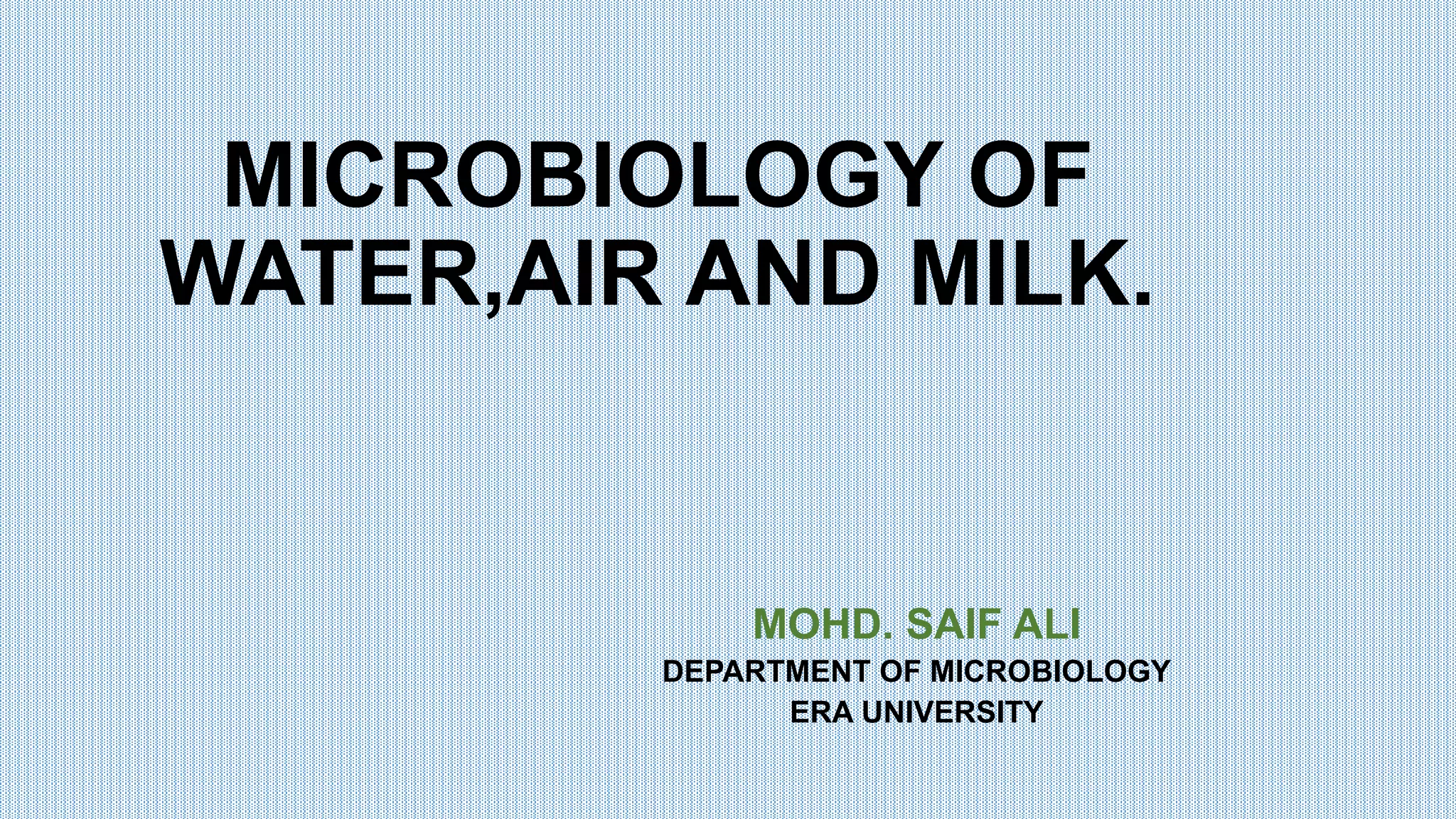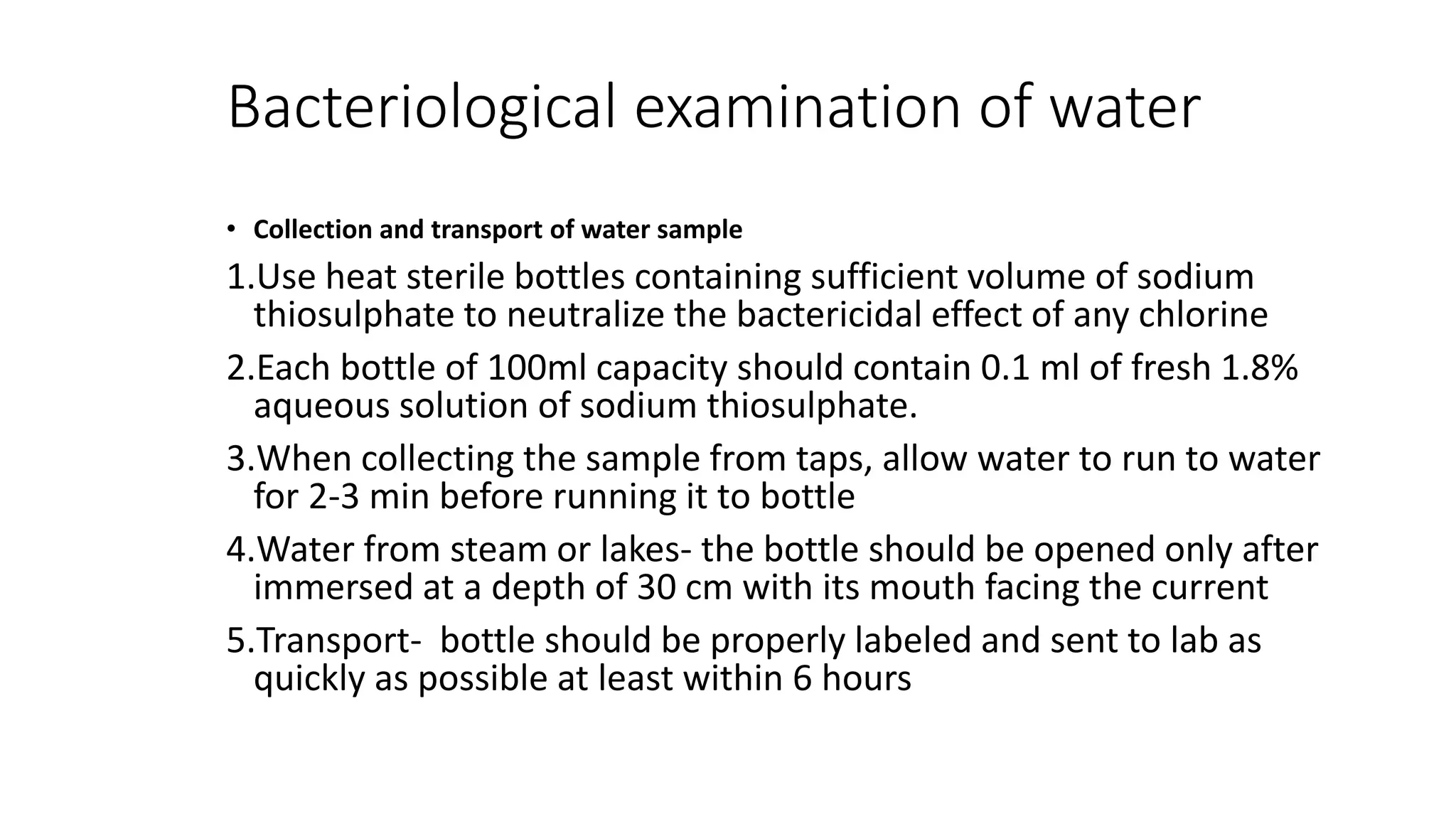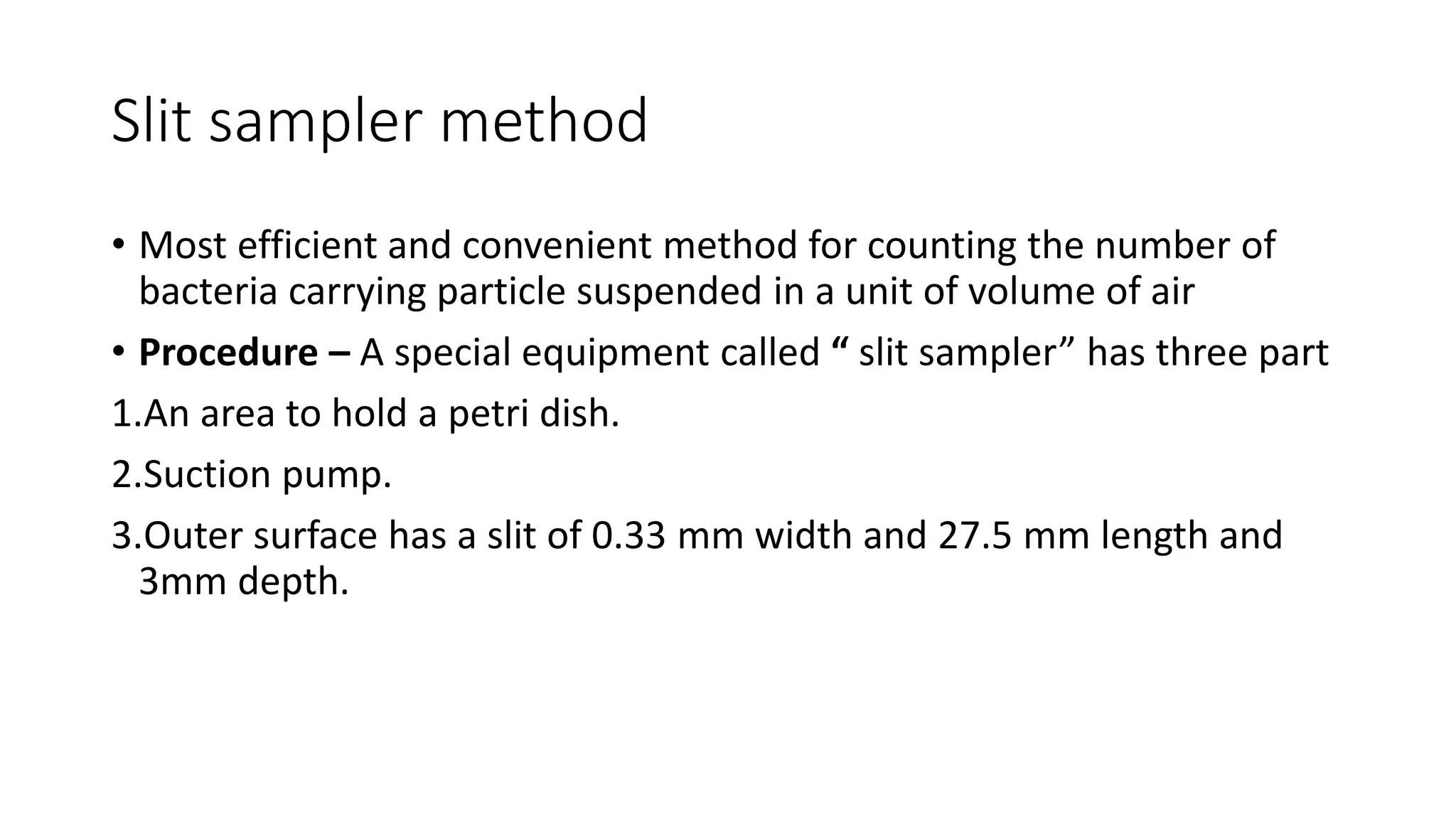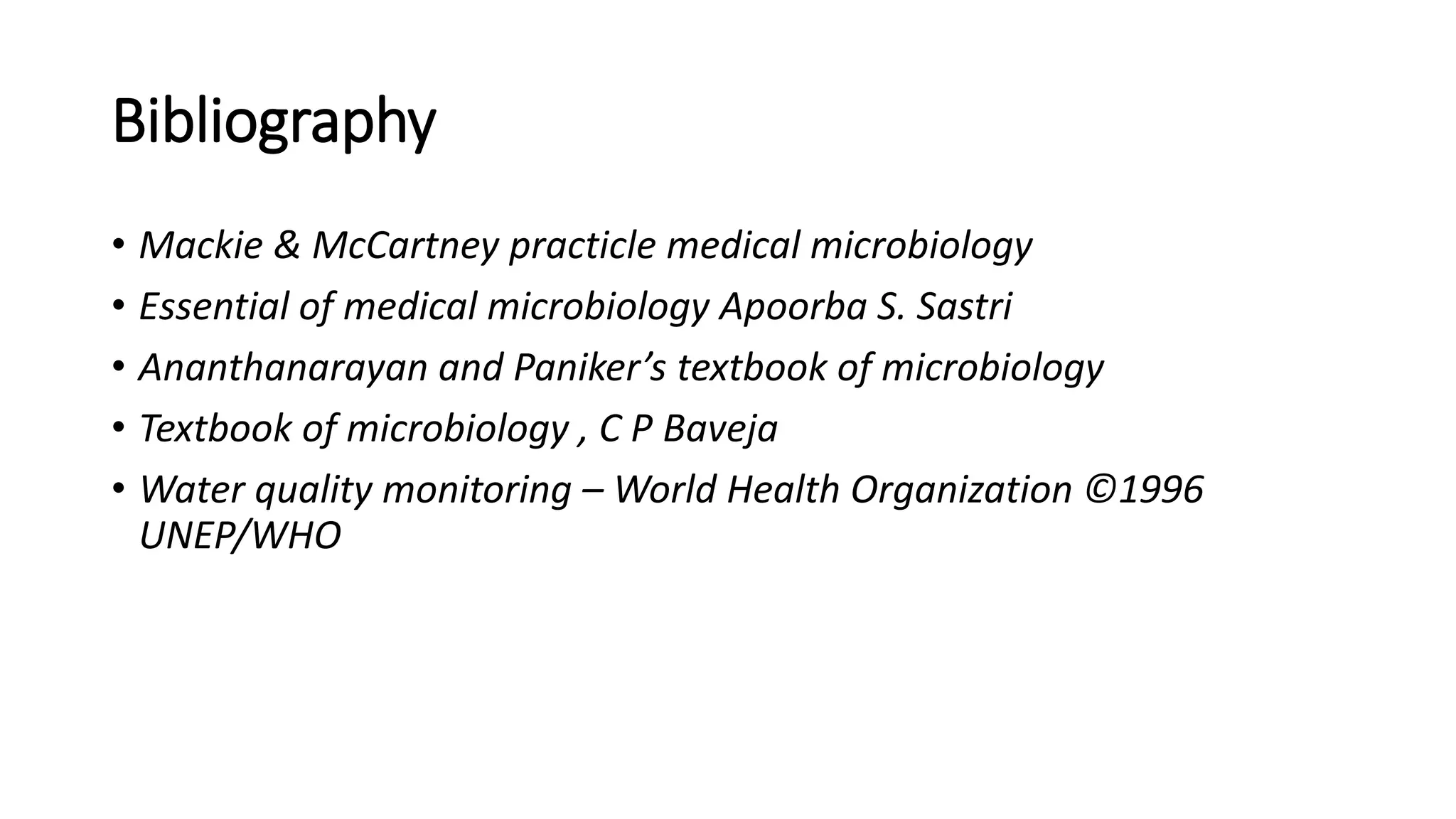The document discusses the microbiology of water, air, and milk, emphasizing the importance of bacteriological examination for assessing water quality through the identification of indicator organisms to detect contamination. It outlines various water testing methods, such as presumptive coliform counts and membrane filtration, along with air surveillance techniques for monitoring microbial contamination in critical environments. Additionally, it covers milk surveillance and different methods of milk sterilization and disinfection.



































